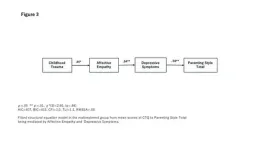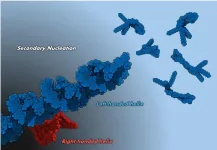Where does the deep sea begin? Definitions vary across science and legal frameworks. For the purposes of their joint analysis, the members of the European Marine Board’s (EMB) Deep Sea and Ocean Health Working Group defined the deep sea as the water column and seabed below 200 metres. Below this point, sunlight barely penetrates the water, and the habitat changes dramatically. According to this definition, the deep sea accounts for about 90 per cent of the ocean’s volume. Its importance for ecosystems and biodiversity is therefore immense. However, pressure on these still relatively untouched areas of our planet is growing: human activities such as oil extraction, fishing, and potential seabed mining threaten deep-sea ecosystems, while climate change is already having a negative impact.
The working group of eleven researchers has now presented its findings and ten key recommendations on the deep sea and ocean health. Under the leadership of Prof. Dr Sylvia Sander, Professor of Marine Mineral Resources at GEOMAR Helmholtz Centre for Ocean Research Kiel, and Dr Christian Tamburini from the French Mediterranean Institute of Oceanography (MIO), the team produced the report, which is being launched today by the EMB in a webinar. The document emphasises, among other points, the urgent need for major investment in deep-sea research to close knowledge gaps and provide a sound scientific basis for decisions such as those concerning deep-sea mining.
“The ocean is an interconnected system stretching from the coast to the deepest depths,” says Sylvia Sander. “Of course, the deep sea cannot be considered in isolation from the photic zone or the seafloor.” Therefore, deep-sea research, use and conservation are intrinsically linked to overall ocean health.
Ten recommendations for sustainable deep-sea protection and better collaboration:
The group presents ten central measures for the sustainable protection of the deep sea:
Effectively govern human activities in the deep sea
Establish an international scientific committee for deep-sea sustainability and protection
Contribute to develop and implement deep-sea Environmental Impact Assessment methodologies
Support transdisciplinary research programs to better understand the role of the deep sea in Ocean (and human) health
Invest in long-term monitoring in the deep sea
Launch large-scale and long-term multidisciplinary natural sciences projects to increase knowledge of global deep-sea processes
Support research efforts in specific critical research fields
Enhance educational, training and research opportunities for all current and future scientists addressing their unique regional challenges
Foster the transfer of marine technology and develop training programs
Continue to promote the Findability, Accessibility, Interoperability, and Reusability (FAIR) Data Principles
The deep sea: Indispensable ecosystems for life on Earth
Until the late 19th century, the idea that life could exist in the cold, dark, high-pressure depths of the ocean was met with scepticism. It was only with the onset of deep-sea research that the first living organisms were discovered there. Today, scientists know that the deep sea hosts a remarkable diversity of life forms. Complex ecosystems can be found along continental slopes, on abyssal plains or around hydrothermal vents – so-called black smokers – many of which remain poorly understood.
Knowledge gaps: Much remains unexplored
It is estimated that around 90 percent of all organisms in the deep sea are still undescribed, and their roles within ecosystems remain largely unknown. Physical oceanography also faces considerable gaps – for example, in the modelling of deep currents that are crucial for the transport of nutrients and pollutants. In marine geochemistry, little is known about how biogeochemical cycles in the deep sea are affected by human activities such as mining. For instance, scientists still lack a clear understanding of how sediment plumes from the extraction of manganese nodules spread and what long-term impacts they may have on seabed communities. Technical challenges also remain: many modern sensors and monitoring systems are not yet adequately developed for extreme depths, making it difficult to gather essential data. Closing these knowledge gaps is urgently needed to support science-based decision-making for deep-sea governance, the scientists argue.
The challenge: Threats to the deep sea from human activities
What we do know for certain is that the ocean – of which the deep sea makes up the largest part – stores vast amounts of CO₂ and heat, helping to mitigate climate change. It plays a central role in the global carbon cycle and produces more than 50 percent of the planet’s oxygen. Disruption of these functions could have serious global consequences. Preserving these ecosystem services requires strong protective measures and sustainable use strategies.
Human activities are already affecting the deep sea in many ways. Irreversible changes on human timescales – such as warming, acidification, and oxygen loss – are threatening these sensitive habitats. At the same time, overexploitation of fish stocks and non-renewable resources such as oil, gas, and minerals is jeopardising biodiversity and ecosystem functions.
Urgent action needed for ocean health
The scientists agree that 2025 is a decisive year to take action for ocean health. It is crucial to take effective measures against climate change now in order to achieve net-zero emissions by 2050. Sylvia Sander explains:
“Climate change is one of the most alarming threats to our life-support systems and to life on Earth itself. Combined with biodiversity loss, it could soon lead to severe and irreversible disruptions to the entire ocean – including the deep sea and ice-covered parts of the planet.”
The role of the EU: How Europe can lead the way in protecting the deep sea
The working group emphasises that Europe should take a leading role in the international protection and sustainable governance of the deep sea, particularly through existing international agreements.
“The EU could play an important role in strengthening international efforts to regulate deep-sea activities,” says Sylvia Sander. “This would require the establishment of scientific committees for deep-sea protection and the development of standardised environmental impact assessments.”
The researchers also call for secured funding of transdisciplinary research and long-term monitoring. Sylvia Sander: “We need to better understand the state of the ocean to protect and use the deep sea sustainably – where are changes becoming visible?” More research and technology are essential. “We also need to support underrepresented nations in deep-sea research and recognise science as a human right. Only then can we safeguard the health of the ocean – and the planet – for future generations.”
Publication:
Sander, S. G., Tamburini, C., Gollner, S., Guilloux, B., Pape, E., Hoving, H. J., Leroux, R., Rovere, M., Semedo, M., Danovaro, R., Narayanaswamy, B. E. (2025) Deep Sea Research and Management Needs. Muñiz Piniella, A., Kellett, P., Alexander, B., Rodriguez Perez, A., Bayo Ruiz, F., Teodosio, M. C., Heymans, J. J. [Eds.] Future Science Brief N°. 12 of the European Marine Board, Ostend, Belgium.
https://www.marineboard.eu/publications/deep-sea-research-and-management-needs
Background: European Marine Board
The European Marine Board (EMB) is a partnership of 38 organisations from 19 European countries that are active in marine research. Founded in 1995, its mission is to strengthen cooperation in European marine science and develop joint research strategies. The EMB acts as a bridge between science and policy, supports knowledge exchange, and provides recommendations to national authorities and the European Commission to advance marine research in Europe. Its members include leading oceanographic institutes, research funders, and universities with a marine focus.
END





